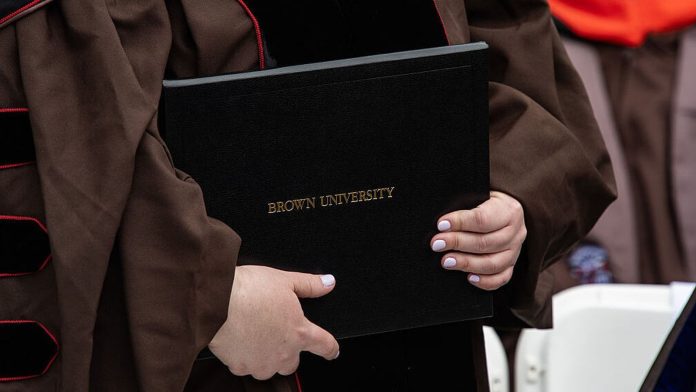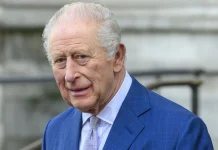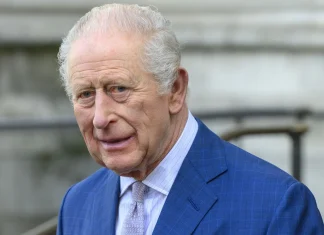
The New Battleground: America’s Universities Under Siege in the Name of “Transparency”
Imagine walking through a university campus where ivy clings to aged stone walls, vibrant murals celebrate diverse histories, and energized students debate the future of the country. Now imagine that same campus under siege—a battleground where politics, ideology, and legal scrutiny collide. This is the latest reality for American institutions of higher education, caught in a fierce political storm stirred by President Donald Trump’s recent directive demanding unprecedented enrollment transparency.
From Courtrooms to Campus Quads: Affirmative Action’s Tumultuous Journey
In a landmark 2023 Supreme Court decision, affirmative action—universities’ attempt to level the playing field for marginalized racial groups—was declared unlawful when explicitly based on race. However, the ruling carved a nuanced path: institutions could still consider an applicant’s racial experiences or identities if framed as part of a broader narrative. But where does that leave the centuries-old debate about fairness, diversity, and equality in education? And just how transparent are universities in walking that fine line?
President Trump’s recent executive memorandum, issued with characteristic bluntness, asserts the country still does not know the full story. “The persistent lack of available data—paired with the rampant use of ‘diversity statements’ and other overt and hidden racial proxies—continues to raise concerns about whether race is actually used in practice,” he wrote. It’s a call for disclosure, but critics argue it is part of a broader political siege on academia.
Behind the Numbers: What Does Transparency Really Mean?
At first glance, the demand that universities submit detailed enrollment data to the National Center for Education Statistics, including race and test scores, sounds reasonable—even overdue. Transparency is arguably a cornerstone of accountability in any institution benefiting from public funds.
Jonathan Reyes, an education policy analyst based in Chicago, sees potential value in the data but warns, “Numbers alone don’t solve the puzzle. Understanding admissions is as much about culture and context as statistics. Without nuance, transparency risks becoming a blunt instrument used to pick political fights rather than improve fairness.”
In recent years, many universities have embraced so-called “diversity, equity, and inclusion” (DEI) initiatives, striving to overcome systemic disparities. However, these programs have become lightning rods for controversy. In Trump’s view, DEI policies “discriminate against white people,” a charge that dovetails with his broader skepticism of what he calls “wokeness” infiltrating campuses.
“Greater transparency is essential to exposing unlawful practices and ultimately ridding society of shameful, dangerous racial hierarchies,” Trump wrote, positioning data disclosure as a means of flushing out entrenched injustices. Yet, to some academics and students, this feels less like a pursuit of equality and more like an intrusion designed to police discourse.
Universities as Political Pawns: The Columbia University Saga
One emblematic case illustrates the stakes: Columbia University, an elite Ivy League institution located in the heart of New York City, became an early target in this combative strategy. Columbia was hit with severe federal funding cuts following allegations that it failed to adequately address anti-Semitism which surged amid heated pro-Palestinian protests on campus.
Hundreds of millions of dollars were frozen. Research projects stalled, and dozens of researchers faced layoffs. “It felt like a winter of discontent,” recalls Dr. Helen Marks, a molecular biologist at Columbia. “All of sudden, the funds we’d depended on vanished. Our labs, our work on cancer and COVID, all put on hold because of political maneuvers that seemed far removed from science.”
By the end of last month, Columbia agreed to pay the government $200 million plus an additional $21 million to settle investigations tied to these accusations. Alongside other universities such as Brown, Columbia consented to disclose admissions data, including race and test scores, signaling a reluctant acquiescence to administration demands.
The High Stakes: More Than Just Data
What’s at play here isn’t simply the release of statistics; it’s a fundamental contest over the soul of American higher education. Universities have traditionally been bastions of free thought and complexity, places that grapple with uncomfortable truths and foster inclusiveness. But now, these hallowed halls confront a political atmosphere that views them alternately as ideological adversaries or privileged enclaves demanding reform.
Dr. Amina Patel, a sociologist specializing in race and education, offers a sharp insight: “The fight over admissions policies is really a battle over who belongs in society. When you drill down, it’s about redrawing boundaries of opportunity and voice. Transparency in admissions, when wielded as a weapon, risks undermining centuries of struggle to broaden access.”
A Global Reflection: What Can the World Learn?
This isn’t merely an American story. Around the globe, institutions wrestle with how to balance merit, equity, and diversity. Europe, Canada, Australia—all face their own reckonings. Yet, the U.S. example resonates because of its outsized influence and the symbolic weight of its institutions. It prompts us to ask: How do we reconcile fairness with past injustices? How transparent is too transparent? And how do we ensure data doesn’t become a tool for division?
Here’s a sobering number to consider: According to the National Center for Education Statistics, in the academic year 2021–2022, approximately 20% of undergraduate students identified as Black or Hispanic—groups historically underrepresented in higher education. Policies aiming to change these figures are complex and fiercely debated, echoing the broader cultural clashes outdoors on campus quads and in Capitol halls.
What Lies Ahead?
The memorandum leaves many details pending, signaling this is just the start of a protracted tug-of-war. Federal oversight will intensify, universities will have to adapt, and amidst it all, students and faculty will continue to navigate shifting terrains of identity, legality, and ideology.
As citizens and global observers, we might pause and ask ourselves: What is the true purpose of education? Is it solely about impartial meritocracy, or does it extend to recognizing and redressing the nuanced histories students bring with them? Can data illuminate paths forward, or will it harden divisions? And finally—how do we preserve spaces for learning, growth, and dialogue in a world increasingly polarized?
In the end, the clash over university admissions is a microcosm of larger social currents sweeping through nations worldwide—about race, equity, justice, and the very fabric of opportunity. The outcome here will ripple far beyond the ivy-covered walls, challenging us all to rethink fairness in education and beyond.









